Graham Reid | | 4 min read
The Incredible String Band: The Mad Hatter's Song (from The 5000 Spirits/Onion album)
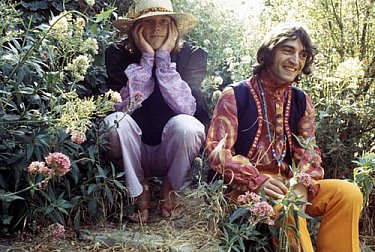
Unexpected people are into the Incredible String Band: Robert Plant from Led Zeppelin you can understand, given Led Zepp played a kind of Anglofolk/Tolkein thing alongside their hijacking of black blues and other hoary riffs.
But bristling DIY post-punk Chris Knox speaking highly of this slightly fey Scottish folk group who pioneered the use of instruments from across the planet and had lyrics which were often hippie-babble about peasants and kings and so on?
Hmmm. That is surprising.
But he's not alone.
We -- and I bought their albums at the time while also listening to the Beatles/Stones/Joe Tex/Motown/psychedalia and poor taste nonsense pop -- also turned an ear in the quiet hours alone or before dawn to these people.
Perhaps it's the unashamed gentleness of their music? Perhaps it is the pot-ease escapism they offered with their doorway into a surreal world of mysticism, magical kingdoms peopled by William Blake, the Romantic poets, Krishna and pastoralism?
Perhaps it's those odd instruments, or their distinctive Scottish (but not too Scottish) voices?
Who knows?
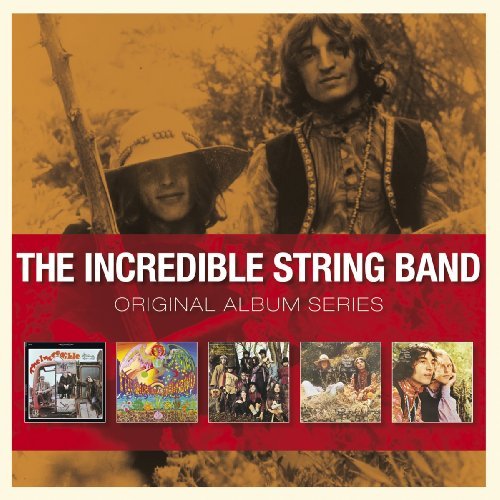 But the ISB wove magic . . . although it didn't begin in quite such an alchemic way.
But the ISB wove magic . . . although it didn't begin in quite such an alchemic way.
By happy coincidence, within weeks of their 1968 double album Wee Tam And The Big Huge which was the apex of their career being inducted into the Essential Elsewhere albums list, the catalogue of early ISB albums was reissued.
Beautifully remastered (just presenting their Joe Boyd-produced albums clean and clear) and with lyrics and liner notes, these albums saw them move from their jiggery-folkery self-titled debut of '66 through rather colourful prisms (marijuana and other benign drugs of the period, as well as shelves full of esoteric books) and on to that essential Wee Tam and the Big Huge.
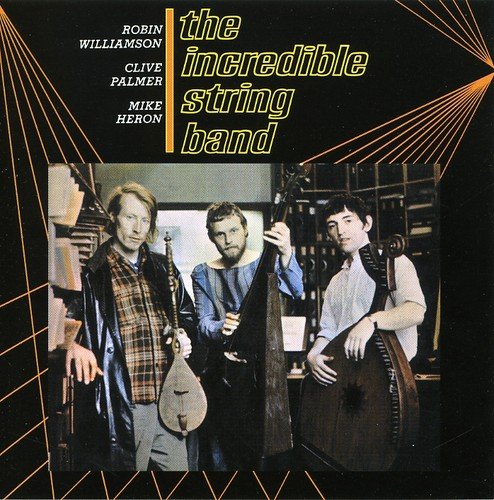 Their debut -- when they were the trio of Robin Willliamson, Mike Heron and Clive Palmer -- is the least interesting in the reissue, unless you want to get a sense of quite where their odd magic (more correctly "magik"?) had its origins.
Their debut -- when they were the trio of Robin Willliamson, Mike Heron and Clive Palmer -- is the least interesting in the reissue, unless you want to get a sense of quite where their odd magic (more correctly "magik"?) had its origins.
The photos in the booklet tell their own story: short hair, beards, banjo . . .
Yet even here they were no folk revivalist outfit, but were essaying a kind of earnest but life-affirming blend of folk-conscious acoustic music which referred to Tim Hardin more than Bob Dylan, Scottish balladry more than Woody Guthrie.
This was British folk of the kind that a young Paul Simon ran headlong into in the very early Sixties -- and the next cold-water morning he was sittin' in the railway station, got his ticket for his destination.
He came away impressed by British folk because unlike its American equivalent it was understated, accepting, inventive lyrically, connecting with country blues and Olde English ballads from dusty tomes, and possessed a sense of mystic spirituality.
But in the grand sweep of their career, the ISB debut -- while being part of that ethic and with with throwaway folk club-pleasing original material like Oh How Happy I Am -- seems slight these days.
By The 5000 Spirits Or The Layers of The Onion of the following year -- in a bewilderingly psychedelic cover by The Fool, aka Simon and Marijke who designed clothes and posters, and were the in-house if ineffectual design team/inventors at the Beatles stoned-out-our-gourd Apple -- they were down to the duo of Heron and Williams . . . and their story takes wings.
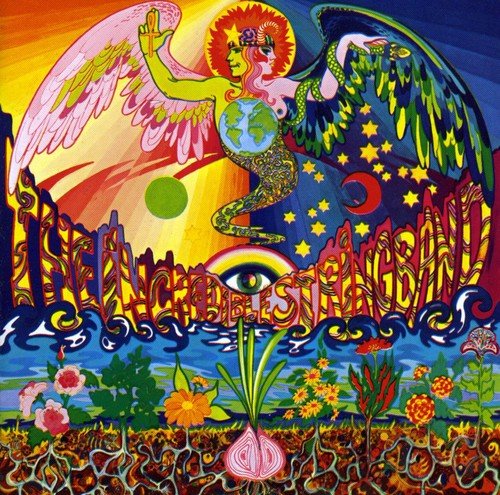 5000 Spirits/Layers extended the folk possibilities in sitar-saturated songs where Krishna's flute come in and acoustic guitars drive the mystic folk.
5000 Spirits/Layers extended the folk possibilities in sitar-saturated songs where Krishna's flute come in and acoustic guitars drive the mystic folk.
In places it is bonkers, of course: try The Mad Hatter's Song by way of exaample -- because here was folk connecting with those great British traditions of eccentricity, Orientalism and the surreal child-like imagination which would soon find its heart with John Lennon's songs drawing on Edward Lear and Lewis Carroll, and that whole English surreal-whimsy.
There is even music hall piano here -- in the year of When I'm 64 -- but it comes with sitar too.
"Somewhere in my mind there is a painting box, I have every colour . . . it's true"
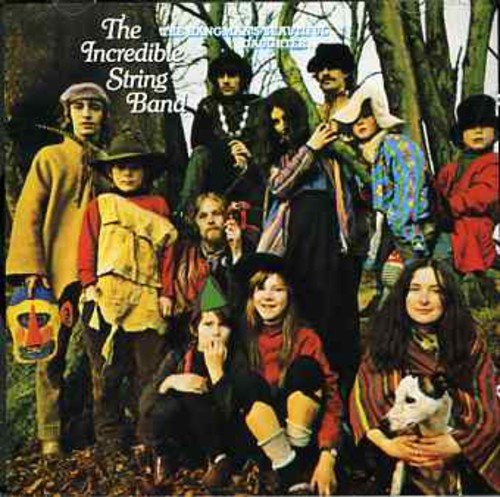 The Incredible String Band were a melting pot in which the elements were disparate but enjoyably crazy. Especially if you were a toker and a smoker.
The Incredible String Band were a melting pot in which the elements were disparate but enjoyably crazy. Especially if you were a toker and a smoker.
The 5000 Spirits/Layers album I always remember as a coming-down 3am album. With incense.
But The Hangmans Beautiful Daughter of later that year was something else again. It was more of the same -- but more so.
The exotica of the global music store came into play: the musical instruments had made up names, right?
And the "folk music" got languid, easy, stretched to . . . well, was that 10 minutes which just disappeared? Was that the dieties touching down for a while, the Tarot being turned or a shaman sitting by your side while the sfffft kicked in, or a friend took your hand while the record player gave up Three is a Green Crown . . .?
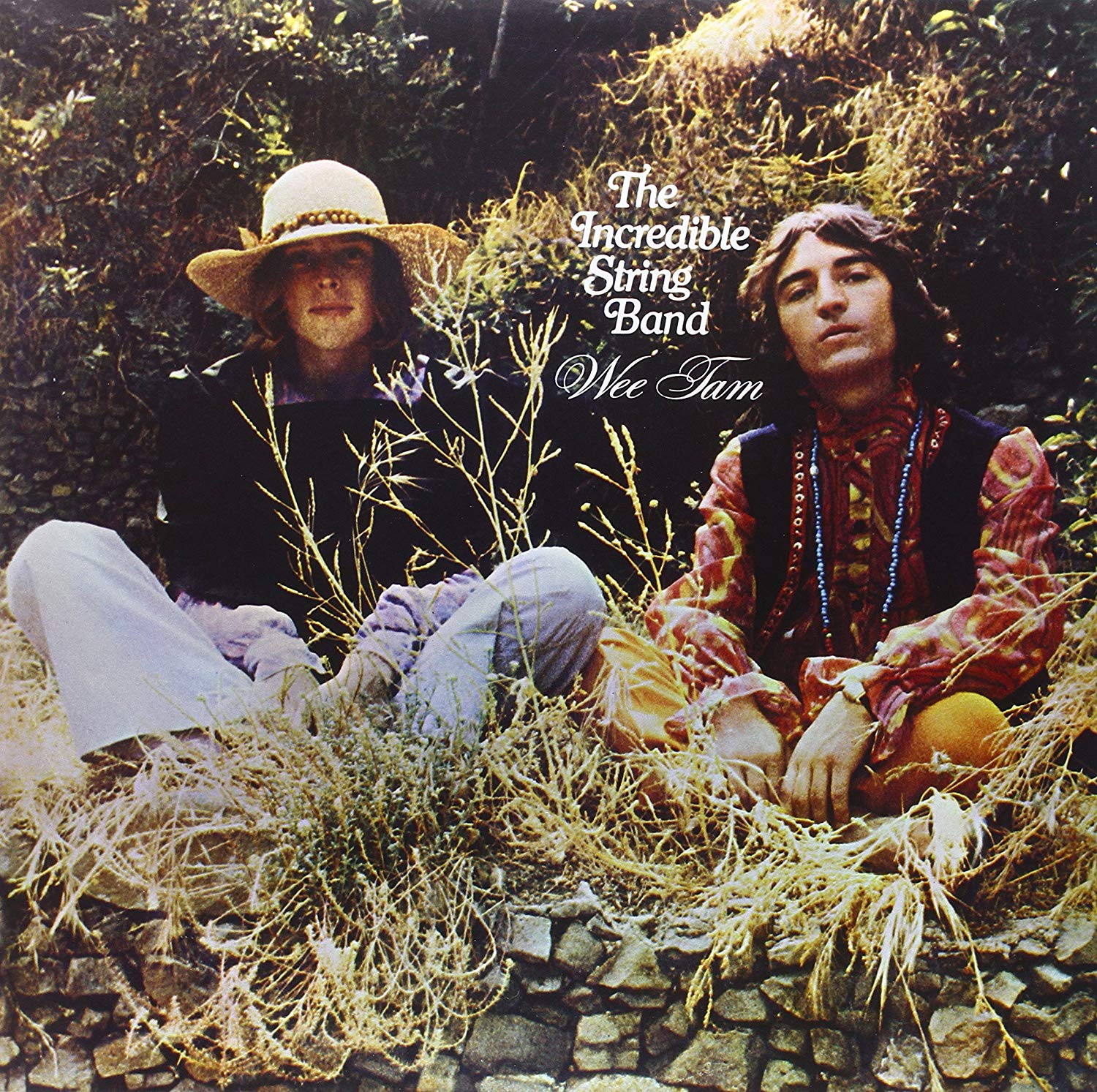 You get the picture.
You get the picture.
But for Wee Tam And The Big Huge -- released as two separate albums in New Zealand at the time -- our senses were alert: this was an extraordinary collection of songs: mystic, mysterious, nod'n'wink ("we're all still here, no one has gone away") and weirdly literary.
As Elsewhere has previously observed, this was music of the spheres (or ovoids perhaps, maybe even dodecahedrons) and by this point the Incredible String Band were inhabiting their own world.
And an odd few at the time seemed to reside there also: Robert Plant and Chris Knox among them.
 I'm proud to say I bought (or sometimes stole) all these album at the time. I can recite almost every line (yes, they are that memorably peculiar), sometime even remember where I was and when I first these odd, geometrically deconstructed folk songs.
I'm proud to say I bought (or sometimes stole) all these album at the time. I can recite almost every line (yes, they are that memorably peculiar), sometime even remember where I was and when I first these odd, geometrically deconstructed folk songs.
And I might not be the better for it, but I still believe I would be the poorer without them: "All this world is but a play, be thou the joyful player . . ."
This was their world, and we were but its happy, stoned guests.

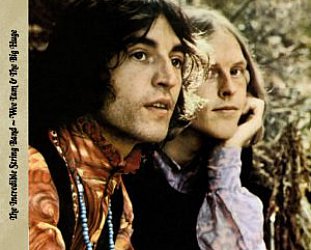
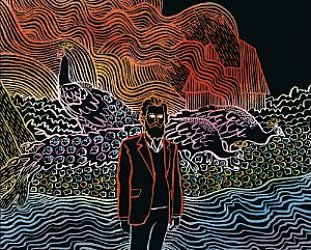

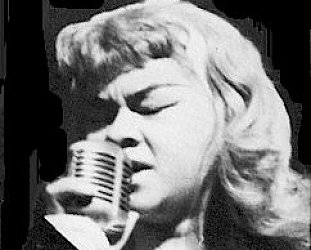
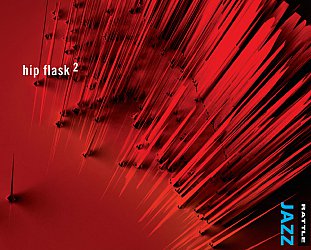

post a comment